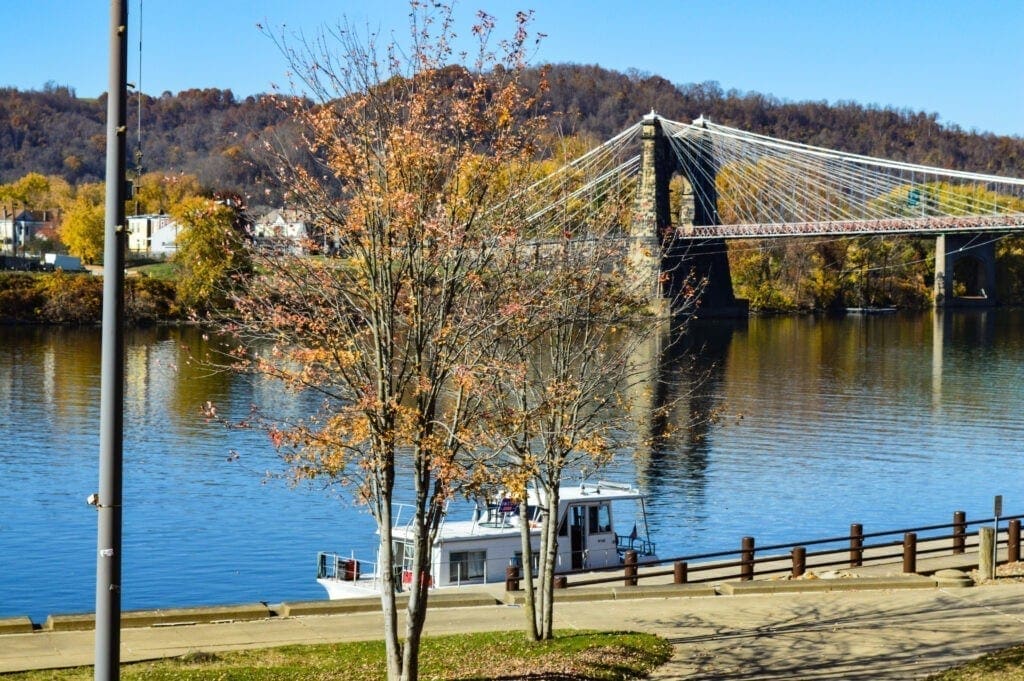“The relationship between opiate addiction and alcoholism is often overlooked, but if you look at the areas across the country that have had a high rate of alcoholism for a while, you will see that the opiates have had a very bad effect there, too.”
Those are the words of Chris Byers, a regional vice president in charge of the Opioid Treatment Program Division for Pinnacle Treatment Centers, and he is a member of the Brooke County Board of Education, as well. Byers travels most days throughout Ohio, Kentucky, and Georgia to oversee the operation of the company’s facilities in those regions. And he has been busy, very busy actually, despite the fact that 2020 has been riddled by COVID-19
“Right now, we have an epidemic inside of a pandemic that we’re trying to treat, and the drug epidemic has not gone away because of COVID-19,” he explained. “In some cases, in fact, it has made it worse because people are isolated without the ability to interact during Alcoholic Anonymous or Narcotics Anonymous meetings.
“Those meetings are very important during recovery, but they have been taken away,” Byers said. “The online meetings have been working for some, but there are others who need that personal contact. If you ever attend a 12-step meeting, I promise you, you are going to be hugged. That’s important to people who are trying to remain in recovery.”
Pinnacle, though, does not operate in his native state of West Virginia, and that fact frustrates Byers.
“That’s because the state has a moratorium on them. There are eight treatment centers in West Virginia right now, but the state tries to legislate how people are treated instead of letting people get the treatment that they need,” he reported. “And West Virginia is a mess to say the least, and it’s been a mess for some time now.
“Because this where I live, I have stayed in tune with what is going on with the drug abuse in the state, and it seems like we can’t get out of our own way sometimes,” Byers said. “In some cases, especially in the Northern Panhandle, people want to deny there is a problem, and that’s just not right. Opiates have been coming out of Pittsburgh and into Hancock and Brooke counties for a lot of years.”

Addiction and Death
In 2018, according to the most recent statistical information offered by the federal Center for Disease Control and Prevention, more than 700 West Virginia residents have succumbed to opioid overdose deaths. Even though there was a slight decline from the previous year, when 833 overdose deaths were reported, county emergency management agencies have introduced a mass texting service to notify the public of a rash of overdoses.
Wheeling Fire Chief Larry Helms said his paramedics handle several overdose calls per week, and Ohio County Sheriff Tom Howard reported that, along with heroin, methamphetamine abuse has increased in 2020.
But how did we get here?
“In West Virginia, in particular, we have a high rate of injuries from working in coal mines and mills and things like that, and when those kinds of injuries are treated with a narcotic, people are going to develop a tolerance to the drug,” Byers said. “That physical tolerance leads to withdrawal symptoms when you are trying to go off them, and when they first came out, opiates were marketed as a long-tern answer to chronic pain with a low risk of abuse.

“Obviously, that was not valid, and that is why those companies have been losing all of the lawsuits,” he said. “This is a blue-collar disease. It doesn’t stop there, but the opiate epidemic started with blue-collar workers, and that’s one of the reasons why the epidemic has received the kind of attention it has.”
The Mountain State ranks in the bottom 10 in many national categories that involve health and well-being, and Byers believes there is a mindset that plays a role with those rankings.
“The work-hard-play-hard mentality and the high rate of the consumption of alcohol and alcoholism play a role, for sure,” Byers said. “That’s because the brain cells that process the endorphins from alcohol are the so close to the brain cells that lead to the euphoria from opiate abuse. That’s why those two addiction diseases go hand-in-hand.
“I’ve spent a lot of time with local parents who can’t understand why their kids are using pain pills or heroin, and yet they have a long history of alcoholism in their families. Those two diseases are so close that it’s usually just a matter of whichever one you get exposed to becomes the drug of choice,” he explained. “Those facts are another reason why we are where we are right now with this epidemic. The relationship between opiate addiction and alcoholism is often overlooked, but if you look at the areas across the country that have had a high rate of alcoholism for a while, you will see that the opiates have had a very bad effect there, too.”

Waves of Addiction
The CDC explains the country’s opiate epidemic as one that began more than 20 years and has increased the past two decades. The pain pills flooded nationwide markets, and once a physician would cease a patient’s prescription, he or she turned to the streets for black-market pills and, ultimately, heroin.
That is why, since 1999, nearly a half a million people across the country have died from opioid overdosing.
“There have been those waves that started in the 1990s, then again in 2010, and again in 2013, and we are still in the middle of it,” Byers said. “Beating an opiate addiction is as hard as anything you’ve ever done. It’s like being programmed to do something and then trying not to do what you are programmed to do. Yes, there is a choice when it comes to any addiction, but if you don’t take the first pill, then you won’t know that you are predisposed to something.
“For so many, though, they took that first pill and many more for the pain. It was a legitimate reason to take the drugs,” he explained. “But that led to a need for more, and then people started changing the way they were taking them for the buzz, and that’s what has led us down this path. The pharmaceutical industry is one of the culprits in this whole thing.”
Byers drives hundreds of miles per week and thousands each year, and that is because his expertise is in opioid addiction recovery, and because he cares.
“Listen! There is no cure for addiction, and that means it is a lifelong illness, so getting into recovery is a very difficult thing to accomplish. It’s about making a decision about your life,” he explained. “It’s about moments of weakness, and that is why you have to stay vigilant every day of your life.
“As hard as it is, when you get sober it, gives you the chance to reclaim your life,” he said. “If you can stop using and getting high isn’t your one and only goal each day, then you have a chance to live again. When you are addicted to opiates, it’s not living.”




